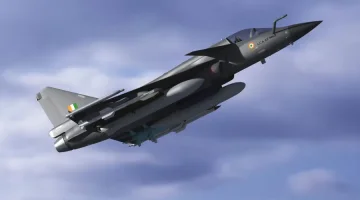- Views: 5K
- Replies: 64

India's aerial defence is at a critical turning point. The IAF's Medium Role Fighter Aircraft (MRFA) tender presents a solution: readily available, capable 4.5-generation jets.
While tempting, India must look beyond this short-term fix and set its sights on acquiring the game-changing technology of 5th-generation fighters.
Understanding the 5th-Gen Advantage
Fifth-generation fighter jets are the cutting edge of aerial warfare. Their stealth design makes them difficult to detect on radar, allowing them to penetrate enemy airspace undetected.Advanced avionics and sensor fusion give pilots unprecedented situational awareness, providing a real-time, 360-degree view of the battlefield. These features translate into a decisive edge in modern combat, enabling them to gather intelligence, neutralize threats, and overpower adversaries with superior firepower and maneuverability.
While capable in their own right, 4.5-gen jets cannot compete with this level of sophistication.
The Rapidly Evolving Geopolitical Landscape
The world of aerial warfare is in constant flux. Opting for 4.5-gen jets risks technological obsolescence by the time they are fully integrated. In contrast, 5th-gen platforms represent a long-term investment, ensuring the IAF remains a dominant force for decades. Investing now means staying ahead of the curve.5th-Gen as a Catalyst for India's Indigenous Fighter Program
Acquiring 5th-gen fighters not only boosts India's defence capabilities but can also accelerate the development of the indigenous Advanced Medium Combat Aircraft (AMCA).Collaboration with foreign manufacturers during the acquisition process offers an invaluable opportunity to gain crucial technological know-how. This knowledge transfer can supercharge India's ability to produce its cutting-edge fighter jets, fostering self-reliance in the long run.
Keeping Pace with Regional Powers
A strategic imperative for India is the fact that regional powers like China already deploy 5th-gen fighter jets. To maintain air superiority and deter potential aggression, India needs to match or exceed these capabilities.A fleet of 4.5-gen jets would leave India at a disadvantage in a high-tech conflict, especially alongside the IAF's upcoming induction of capable 4.5-gen jets like the Tejas Mk II and Mk 1A.
Managing the Costs of Progress
Undoubtedly, 5th-gen jets come with a higher upfront cost and more complex maintenance needs. However, these must be weighed against the potential consequences of falling behind in aerial technology.Strategic partnerships with leading aerospace companies can help manage these costs and ensure a smooth and sustainable acquisition process.
The Choice for India's Future
The MRFA program offers a quick solution, but a short-term one. By acquiring 5th-gen fighters, India makes a strategic choice to secure its skies for the long haul, deter aggression, and boost its journey to self-reliance in fighter jet production.While the path might be slightly more complex, the rewards are far greater. The time for India to invest in true air dominance is now!

